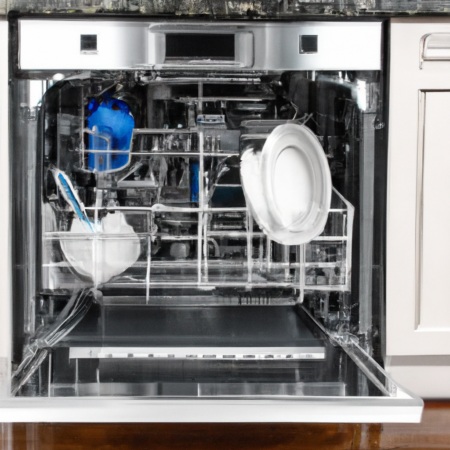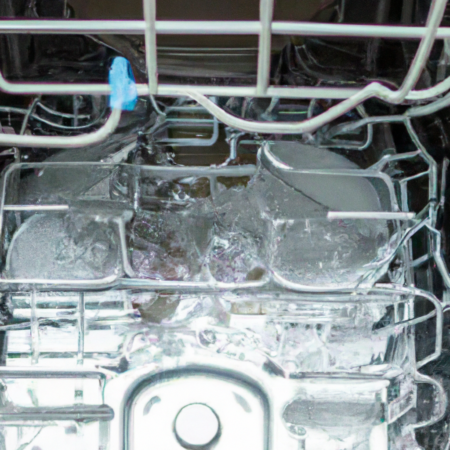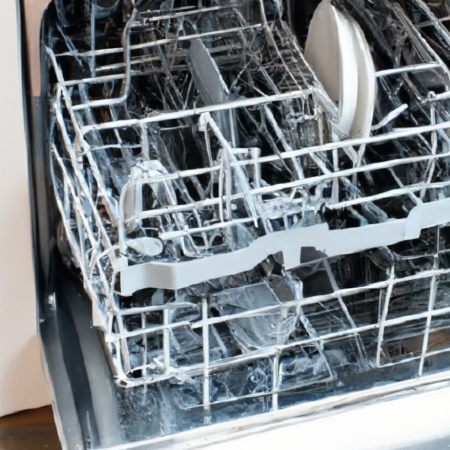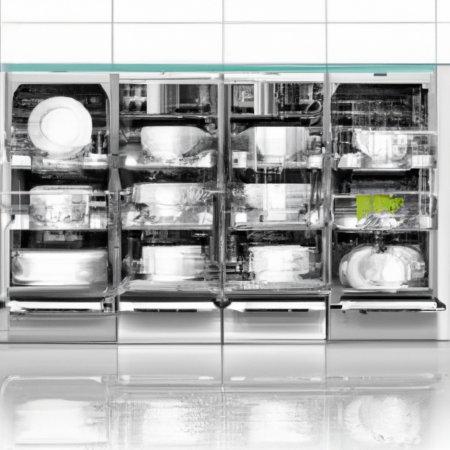Have you ever found yourself pondering whether there is a correct method to load a dishwasher? It’s a question that has puzzled many, as we strive to efficiently clean our dishes while maximizing space. In this article, we will explore the age-old debate of the right and wrong way to load a dishwasher. From strategically placing plates to sorting silverware, we’ll uncover expert advice and helpful tips to ensure your dishwasher loads are both effective and efficient. So, the next time you face the daunting task of loading your dishwasher, you can do so with confidence, knowing you’re doing it just right.
The Importance of Loading a Dishwasher Correctly
loading a dishwasher may seem like a mundane task, but it is actually crucial for the overall effectiveness of the cleaning process. By loading your dishwasher correctly, you can ensure that each dish, glass, and utensil receives a thorough and efficient cleaning, saving you time and effort. Additionally, the way you load your dishwasher can also have a significant impact on its lifespan and energy and water consumption. In this article, we will explore the effects of loading a dishwasher correctly, common mistakes to avoid, and best practices for achieving optimal cleaning results.
Common Mistakes in Dishwasher Loading
When it comes to loading a dishwasher, there are several common mistakes that many people unknowingly make. By being aware of these mistakes and avoiding them, you can dramatically improve the effectiveness of your dishwasher.
Overloading
One of the most common mistakes in dishwasher loading is overloading the dishwasher. While it may be tempting to fit as many dishes as possible in a single load, doing so can actually hinder the cleaning process. Overloading prevents proper water circulation and may leave some dishes with residue or even damage fragile items. It is essential to leave enough space between items, allowing water and detergent to reach every surface.
Mixed Metals
Mixing different types of metals, such as stainless steel and silver, in the dishwasher can lead to discoloration, corrosion, and pitting. This mistake is often made when combining flatware from different sets. To avoid any potential damage, it is best to separate your silver utensils from stainless steel and other metals. Taking a few extra seconds to sort your flatware can save you from the headache of needing to replace tarnished or damaged pieces.
Improper Positioning of Utensils
Many people are unsure of how to position utensils correctly in the dishwasher. This often results in inefficient cleaning, with some utensils remaining dirty and others nesting together, preventing thorough cleaning. To ensure optimum cleaning, place forks with their prongs facing up, while spoons and knives should be placed with handles facing down. This arrangement allows water to reach the utensil surfaces more effectively, leading to better cleaning results.
Incorrect Setting Selections
Selecting the wrong dishwasher settings can significantly impact the cleaning outcome. Some settings are specifically designed for delicate items, while others are better suited for heavily soiled pots and pans. Choosing the wrong setting can lead to inadequate cleaning, excessive water or energy usage, and even damage to sensitive dishes. It is essential to refer to your dishwasher’s user manual for guidance on the appropriate settings for different types of loads.
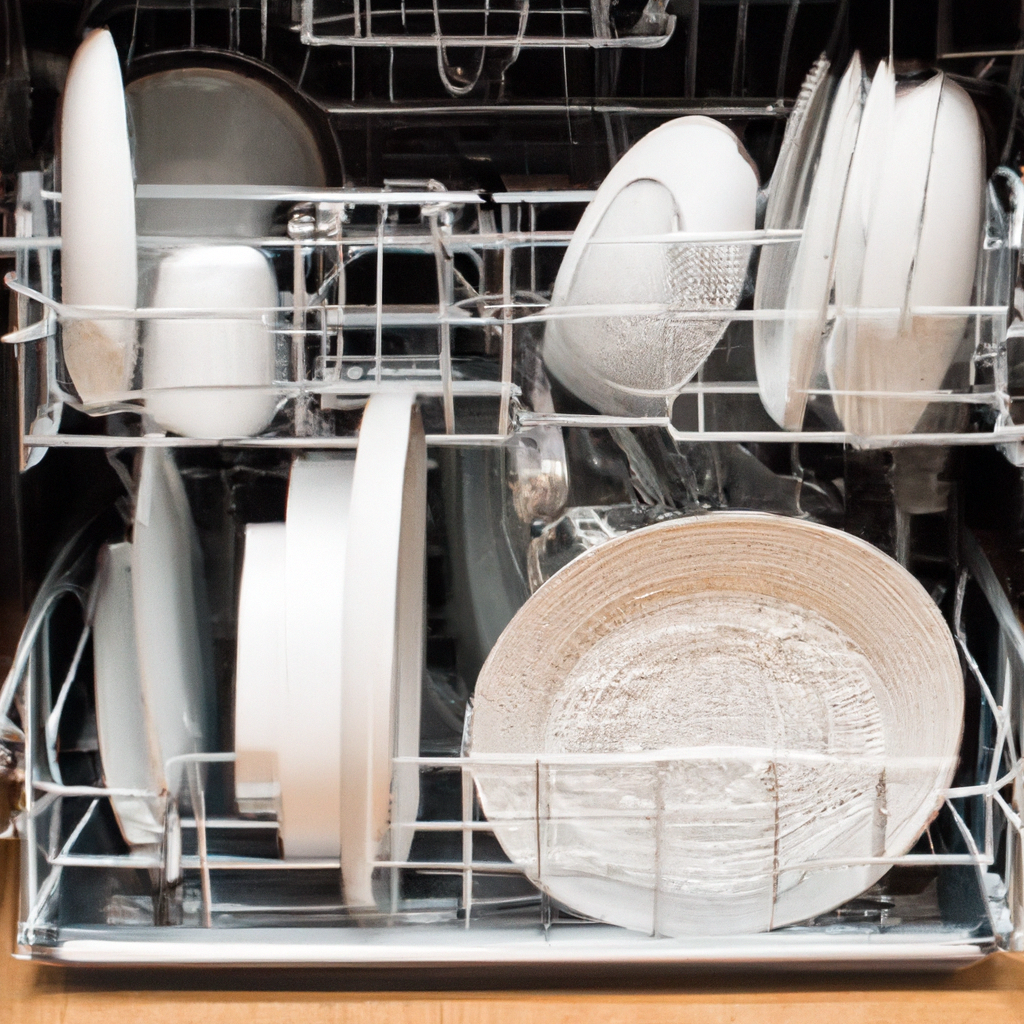
Proper Positioning of Dishes
To achieve the best cleaning results, it is necessary to understand the correct positioning of dishes within your dishwasher. Following these guidelines will ensure that each dish receives thorough cleaning and avoids potential damage.
The Right Direction to Face Dishes
To maximize cleaning efficiency, dishes should be positioned facing the center of the dishwasher. This allows water and detergent to reach all surfaces and removes food particles effectively. Furthermore, ensure that larger items, such as plates and platters, are placed towards the back of the dishwasher, where the water spray is most powerful.
Which Items to Place at the Bottom Rack
The bottom rack of your dishwasher is designed to accommodate larger, heavier items, such as pots, pans, and dishes with stubborn food residue. Place these items in a stable and secure manner, leaving enough space between them to allow water and detergent to circulate freely. Additionally, avoid placing plastic items on the bottom rack as they may come into contact with the heating element and melt or warp.
Which Items to Place at the Top Rack
The top rack of your dishwasher is best suited for smaller and more delicate items, such as glassware, cups, and lightly soiled dishes. Ensure that glasses and cups are positioned at an angle between the tines to prevent water from pooling inside. In the case of stemware, consider using specialized stemware holders or placing them between the tines to minimize the risk of breakage.
Correct Placement of Cutlery
Properly placing cutlery in your dishwasher can help ensure their cleanliness, protect against damage, and prevent accidents when unloading. Adhering to the following guidelines will help you optimize the cleaning of your knives, forks, and spoons.
Which Side to Place the Fork Prongs
When loading forks into your dishwasher, it is important to position them with the prongs facing up. Placing forks in this manner allows the water spray to reach the concave side of the utensil, ensuring thorough cleaning. Additionally, separating forks from one another will prevent them from nesting together during the cleaning process.
Positioning of Knives
When it comes to knives, it is crucial to ensure that they are placed in the dishwasher with the blades facing downwards. This not only prevents accidents during unloading but also reduces the risk of injury when handling them after the cleaning cycle is complete. Take care to position the knives in a stable manner, ensuring they do not shift during the wash cycle.
Spacing for Optimum Cleaning
To achieve the best cleaning results for your cutlery, it is essential to provide sufficient spacing between each item. Overcrowding cutlery can prevent water and detergent from reaching all surfaces, leading to incomplete cleaning. By allowing adequate space between utensils, you can ensure that each item receives the necessary water flow to remove food residue effectively.
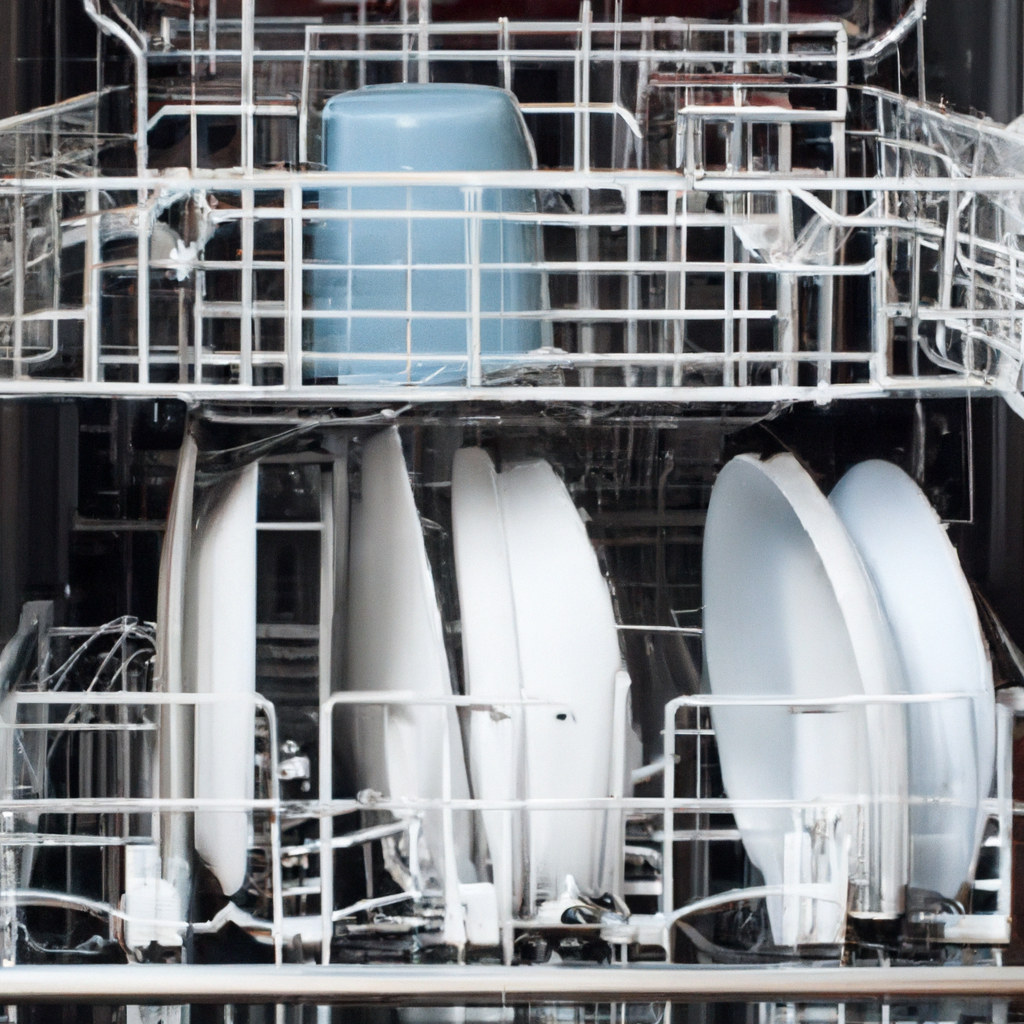
Best Practices for Loading Glass and Delicate Items
Glassware and delicate items require extra care when loading them into the dishwasher. By following these best practices, you can protect your fragile items from damage and ensure they come out sparkling clean after every wash.
Protection against Damage
To protect your glassware from potential damage in the dishwasher, it is crucial to avoid direct contact between items. Nesting glasses or placing them too closely can result in chips, cracks, or breakage. Utilize the rows and spaces available in the dishwasher rack to provide sufficient spacing between each glass. Consider investing in stemware holders or securing delicate items with silicone bands to provide additional stability and protection during the wash cycle.
Reduction of Water Spots
Water spots can be a common issue when washing glassware in the dishwasher. To minimize the occurrence of water spots, use a rinse aid in your dishwasher. A rinse aid helps to reduce the surface tension of the water, resulting in more effective rinsing and drying. Additionally, ensure that your dishwasher’s temperature settings are suitable for glassware to prevent excessive heat, which can also contribute to the formation of water spots.
Proper Spacing to Avoid Collision
When loading fragile items into the dishwasher, it is essential to consider their potential movement during the wash cycle. Placing delicate items too close to one another can result in collisions, leading to chips or scratches. By providing adequate spacing and arranging items in a stable manner, you can minimize the risk of unintended contact between delicate items, ensuring their safety and preserving their longevity.
Pre-Cleaning: Necessary or Not?
The debate on whether pre-cleaning your dishes before loading them into the dishwasher is necessary continues. Understanding the purpose of pre-cleaning and when it may be appropriate can help you make an informed decision and optimize your dishwasher’s cleaning cycles.
Understanding the Purpose of Pre-Cleaning
The main purpose of pre-cleaning dishes before placing them in the dishwasher is to remove large food particles and debris. Dishwashers are designed to clean dishes, not to act as garbage disposals. By scraping off excess food waste and rinsing dishes before loading them, you can prevent clogs in the dishwasher’s filter, ensure more efficient cleaning, and reduce the risk of lingering food odors.
When to Pre-Clean
While pre-cleaning is not always necessary, it is recommended for heavily soiled dishes with dried-on food residue. Items like pots, pans, and baking dishes that have been used for cooking greasy or sticky foods may benefit from a quick pre-rinse to remove any stubborn residue. Delicate items or lightly soiled dishes, on the other hand, usually do not require pre-cleaning and can be safely loaded into the dishwasher as is.
Pre-Cleaning vs. Dishwasher’s Cleaning Cycles
It is important to note that pre-cleaning does not replace the dishwasher’s cleaning cycles. Pre-cleaning should be viewed as a supplementary step to ensure more effective cleaning, rather than relying solely on the dishwasher to remove all traces of food residue. By combining pre-cleaning with the dishwasher’s cleaning cycles, you can achieve optimal results and maintain the cleanliness of your dishes, utensils, and cookware.
The Role of Dishwasher Settings
Choosing the right setting on your dishwasher is crucial for achieving the best cleaning results while minimizing energy and water consumption. Understanding the different dishwasher modes and the importance of rinse aid can greatly enhance your dishwasher’s performance.
Choosing the Right Setting According to Load Type
Many modern dishwashers offer various settings to accommodate different load types. These settings typically include options like normal, heavy-duty, delicate, and quick wash. It is important to evaluate the type and soil level of your load before selecting the appropriate setting. Choosing the right setting ensures that dishes are adequately cleaned without wasting unnecessary water and energy.
Understanding the Different Dishwasher Modes
In addition to different settings, dishwashers often have various modes that provide additional features and benefits. For example, some dishwashers have a sanitize mode, which uses higher water temperatures to kill bacteria and reduce the risk of cross-contamination. Others may have a delay start mode, allowing you to run the dishwasher during off-peak hours to save energy. Familiarize yourself with the available modes on your dishwasher and utilize them when appropriate to enhance your overall dishwashing experience.
The Importance of Rinse Aid
Rinse aid is an essential component of optimal dishwasher performance. It plays a crucial role in improving drying efficiency, preventing water spots, and enhancing the overall cleanliness of your dishes. By reducing the surface tension of the water, rinse aid allows it to flow more freely, resulting in more effective rinsing and faster drying. Ensure that your dishwasher’s rinse aid dispenser is properly filled, and replenish it as needed to achieve the best results.
Dealing with Oversized or Unusual Items
While dishwashers are designed to accommodate a wide range of items, there are occasions when oversized or unusual items may pose a challenge. Knowing how to handle these items correctly will help you make the most of your dishwasher’s capabilities.
Deciding What Can and Can’t Go in the Dishwasher
Not all items are dishwasher safe, so it is crucial to determine what can and cannot be washed in the dishwasher. Items made of wood, cast iron, or fine china, for example, are not dishwasher safe and should be washed by hand. Additionally, certain plastic items may not withstand the high temperatures inside the dishwasher and can warp or melt. Always refer to the manufacturer’s guidelines or labels to determine the dishwasher compatibility of specific items.
How to Position Large and Awkwardly Shaped Items
When dealing with oversized or awkwardly shaped items in the dishwasher, it may require some creativity to find the best positioning. Large pots, for instance, can be placed at an angle or even upside down to ensure proper cleaning. Take advantage of adjustable racks and tines to create a secure and stable arrangement for these items, preventing them from impeding water circulation or coming into contact with the dishwasher’s spray arms.
Alternatives for Items That Can’t be Washed in Dishwasher
For items that are not dishwasher safe, hand washing is the best alternative. However, if time or convenience is a concern, there are specialized products available, such as dishwashing baskets or trays, designed to protect delicate or non-dishwasher safe items. These accessories allow you to wash these items separately from the rest of the dishwasher load, ensuring their safety and cleanliness without compromising the dishwasher’s performance.
The Impact of Dishwasher Layout
The design and layout of dishwashers can vary significantly, and understanding how different dishwasher designs affect loading can greatly improve your dishwashing experience. Adapting to different rack types and utilizing adjustable racks is key to achieving efficient and effective cleaning.
How Different Dishwasher Designs Affect Loading
Various dishwasher models feature different designs that may influence loading practices. Some dishwashers have a third rack, providing an additional space for utensils or small items. Others may have foldable tines or adjustable racks, allowing for more flexible loading options. Familiarize yourself with the specific design features of your dishwasher to optimize your loading techniques and achieve the best cleaning results.
Adapting to Different Rack Types
Dishwashers typically have two racks, with the bottom rack intended for larger items and the top rack for smaller, more delicate items. However, the configuration and spacing of the racks can differ between models. Some dishwashers may have tines that are closer together, while others may have wider spacing. It is important to adapt your loading process to the specific rack type to ensure efficiency and proper cleaning.
The Importance of Adjustable Racks
Dishwashers with adjustable racks offer added flexibility in accommodating various load sizes and shapes. Take advantage of this feature to create customized spaces for oversized items, such as baking sheets or platters. By adjusting the racks to fit your specific needs, you can prevent items from shifting during the wash cycle and optimize water distribution for thorough cleaning.
Maintaining Your Dishwasher
Proper maintenance is essential for preserving the lifespan and performance of your dishwasher. By following these maintenance practices, you can ensure optimal cleaning results and minimize the need for repairs.
Regular Cleaning for Optimal Performance
To maintain optimal dishwasher performance, regular cleaning is crucial. Remove any food debris or residue from the dishwasher’s filter, spray arms, and interior. Wipe down the door gasket to prevent the buildup of mold or mildew. Additionally, run an empty dishwasher cycle with a specialized dishwasher cleaner or a mixture of vinegar and baking soda to eliminate any lingering odors and maintain cleanliness.
When to Call a Professional
While regular maintenance can prevent many dishwasher issues, there may be times when professional assistance is required. If you notice unusual noises, persistent leaks, or a decline in cleaning performance, it is advisable to contact a professional dishwasher repair service. They have the expertise to identify and address any underlying issues, ensuring your dishwasher operates at its best.
Understanding Signs of Wear and Tear
As dishwashers age, signs of wear and tear may become apparent. These signs can include rusty racks, malfunctioning controls, or a decline in cleaning effectiveness. It is important to be proactive in addressing these issues to prevent further damage and prolong the lifespan of your dishwasher. Monitor the performance of your dishwasher regularly and address any concerns promptly to avoid costly repairs or premature replacement.
In conclusion, loading a dishwasher correctly is not just about convenience but plays a significant role in achieving optimal cleaning results, extending the lifespan of your dishwasher, and minimizing energy and water consumption. By avoiding common loading mistakes, properly positioning dishes, cutlery, and delicate items, considering the need for pre-cleaning, understanding the importance of dishwasher settings, dealing with oversized or unusual items, adapting to different dishwasher layouts, and maintaining your dishwasher, you can ensure your dishwasher operates at its best, saving you time, effort, and money in the long run. So the next time you load your dishwasher, remember the importance of doing it correctly and enjoy the satisfaction of consistently clean and sparkling dishes.


